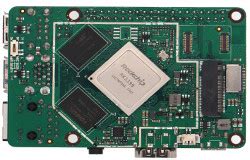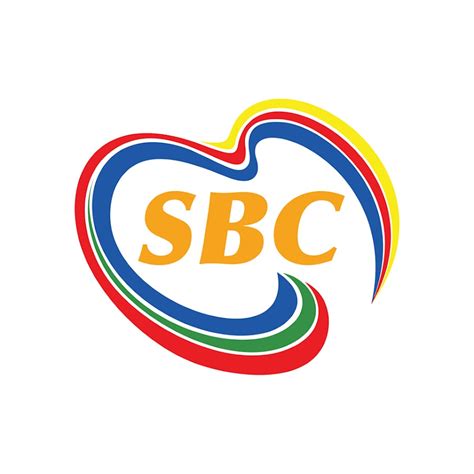Introduction to Single Board Computers (SBCs)
Single board computers (SBCs) are compact, affordable, and versatile computing devices that have gained immense popularity in recent years. These tiny computers pack a punch, offering a wide range of applications from hobbyist projects to industrial automation. In this comprehensive review and roundup, we will explore the world of SBCs, comparing popular models, their specifications, and their suitability for various use cases.
What is a Single Board Computer?
A single board computer is a complete computer built on a single circuit board, featuring a microprocessor, memory, input/output (I/O) ports, and other essential components. SBCs are typically small in size, making them ideal for embedded systems, IoT projects, and portable computing applications.
Advantages of Single Board Computers
- Cost-effective: SBCs are significantly cheaper than traditional desktop computers or laptops.
- Energy-efficient: Due to their low power consumption, SBCs are suitable for battery-powered projects and always-on applications.
- Compact size: The small form factor of SBCs allows for easy integration into various projects and devices.
- Versatility: SBCs can run a variety of operating systems and support a wide range of programming languages, making them adaptable to different use cases.
Popular Single Board Computer Models
1. Raspberry Pi
The Raspberry Pi is one of the most well-known and widely used SBCs. It was first introduced in 2012 and has since released several iterations, each offering improved performance and features.
Raspberry Pi 4 Model B Specifications
| Specification | Details |
|---|---|
| Processor | Broadcom BCM2711, Quad-core Cortex-A72 (ARM v8) 64-bit |
| Clock Speed | 1.5 GHz |
| RAM | 2GB, 4GB, or 8GB LPDDR4-3200 SDRAM |
| Connectivity | 2.4 GHz and 5.0 GHz IEEE 802.11ac wireless, Bluetooth 5.0, BLE, Gigabit Ethernet |
| GPIO | 40-pin GPIO header |
| USB | 2 × USB 3.0 ports, 2 × USB 2.0 ports |
| Video Output | 2 × micro-HDMI ports (up to 4Kp60 supported) |
The Raspberry Pi 4 Model B is a powerful SBC that offers excellent performance for its price point. It is suitable for a wide range of projects, from media centers to retro gaming consoles and even desktop replacements.
2. NVIDIA Jetson Nano
The NVIDIA Jetson Nano is an SBC designed for AI and robotics applications. It features an NVIDIA Maxwell architecture GPU with 128 CUDA cores, making it capable of running multiple neural networks in parallel for applications like image classification, object detection, and speech processing.
NVIDIA Jetson Nano Specifications
| Specification | Details |
|---|---|
| Processor | Quad-core ARM Cortex-A57 MPCore processor |
| GPU | NVIDIA Maxwell architecture with 128 CUDA cores |
| RAM | 4GB 64-bit LPDDR4 25.6 GB/s |
| Connectivity | Gigabit Ethernet, M.2 Key E, USB 3.0 Type A and Type C |
| GPIO | 40-pin GPIO header |
The NVIDIA Jetson Nano is an excellent choice for projects that require AI capabilities, such as autonomous robots, intelligent video analytics, and smart IoT devices.
3. BeagleBone Black
The BeagleBone Black is an open-source SBC that emphasizes expandability and connectivity. It features a powerful ARM Cortex-A8 processor and a wide array of I/O options, making it suitable for industrial control, robotics, and sensor-based applications.
BeagleBone Black Specifications
| Specification | Details |
|---|---|
| Processor | AM335x 1GHz ARM Cortex-A8 |
| RAM | 512MB DDR3 RAM |
| Storage | 4GB 8-bit eMMC on-board flash storage |
| Connectivity | USB client for power & communications, USB host, Ethernet |
| GPIO | 65 GPIO pins |
The BeagleBone Black’s extensive GPIO capabilities and community support make it an attractive option for projects that require interfacing with various sensors and actuators.

Comparing Single Board Computers
When choosing an SBC for your project, consider the following factors:
- Processing power and GPU capabilities
- RAM and storage capacity
- Connectivity options (Wi-Fi, Bluetooth, Ethernet)
- GPIO and I/O expansion
- Community support and software ecosystem
- Power consumption and thermal management
- Price and availability
Here’s a comparison table of the three SBCs discussed in this article:
| Feature | Raspberry Pi 4 Model B | NVIDIA Jetson Nano | BeagleBone Black |
|---|---|---|---|
| Processor | Broadcom BCM2711 | ARM Cortex-A57 | AM335x ARM Cortex-A8 |
| GPU | VideoCore VI | NVIDIA Maxwell | PowerVR SGX530 |
| RAM | 2GB, 4GB, or 8GB | 4GB | 512MB |
| Connectivity | Wi-Fi, Bluetooth, Ethernet | Ethernet, M.2 Key E | Ethernet, USB |
| GPIO | 40-pin header | 40-pin header | 65 pins |
| Price (approx.) | $35 – $75 | $99 | $55 |

Use Cases for Single Board Computers
1. Media Centers and Home Automation
SBCs like the Raspberry Pi are popular choices for building media centers and home automation hubs. With the right software, such as Kodi or Home Assistant, you can create a centralized system for streaming media, controlling smart home devices, and automating tasks.
2. Robotics and AI Projects
SBCs with powerful GPUs, like the NVIDIA Jetson Nano, are ideal for robotics and AI applications. These boards can handle complex tasks such as computer vision, machine learning, and sensor fusion, enabling the development of intelligent and autonomous systems.
3. Industrial Control and Monitoring
SBCs with robust I/O capabilities, like the BeagleBone Black, are well-suited for industrial control and monitoring applications. They can interface with various sensors, actuators, and communication protocols, allowing for the creation of custom control systems and data acquisition solutions.

Frequently Asked Questions (FAQ)
1. What is the best single board computer for beginners?
The Raspberry Pi is often considered the best SBC for beginners due to its extensive community support, user-friendly documentation, and wide range of compatible software and hardware.
2. Can I use a single board computer as a desktop replacement?
While some SBCs, like the Raspberry Pi 4, offer decent performance for basic computing tasks, they may not be suitable as a complete desktop replacement for demanding workloads or resource-intensive applications.
3. How do I choose the right single board computer for my project?
When selecting an SBC for your project, consider factors such as processing power, memory, connectivity options, GPIO capabilities, and community support. Evaluate your project requirements and choose an SBC that best aligns with your needs and budget.
4. Can single board computers run Windows?
Most SBCs are designed to run Linux-based operating systems. However, some models, like the Raspberry Pi, can run Windows 10 IoT Core, a specialized version of Windows for embedded and IoT applications.
5. Are single board computers suitable for commercial and industrial applications?
Yes, many SBCs are designed with industrial-grade components and can operate in harsh environments. They are often used in commercial and industrial settings for tasks such as process control, data acquisition, and embedded systems.
Conclusion
Single board computers have revolutionized the world of embedded systems and DIY projects. With their compact size, versatile capabilities, and affordable prices, SBCs like the Raspberry Pi, NVIDIA Jetson Nano, and BeagleBone Black have opened up a world of possibilities for makers, developers, and engineers.
When choosing an SBC for your project, consider your specific requirements, budget, and the level of community support available. Whether you’re building a media center, developing an AI-powered robot, or creating an industrial control system, there is an SBC that can meet your needs.
As the SBC market continues to evolve, we can expect to see even more powerful and feature-rich boards in the future, further expanding the potential applications of these versatile computing devices.

No responses yet